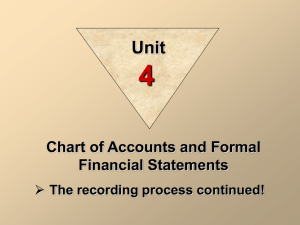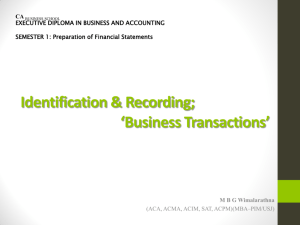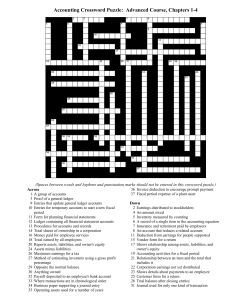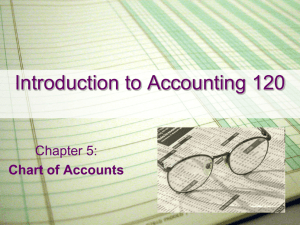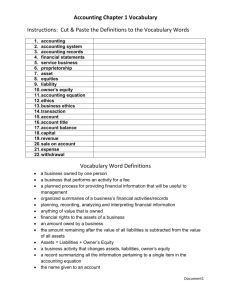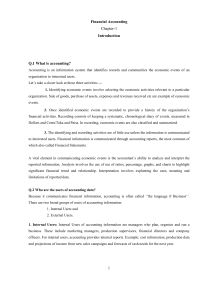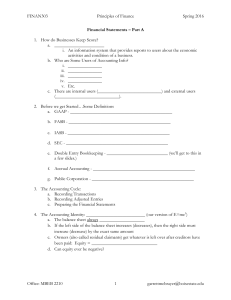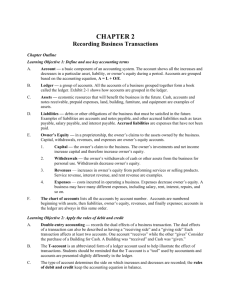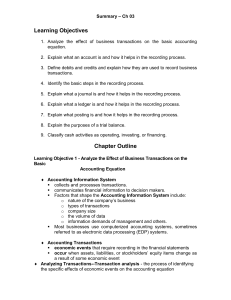Accounting Terms and Definitions
advertisement
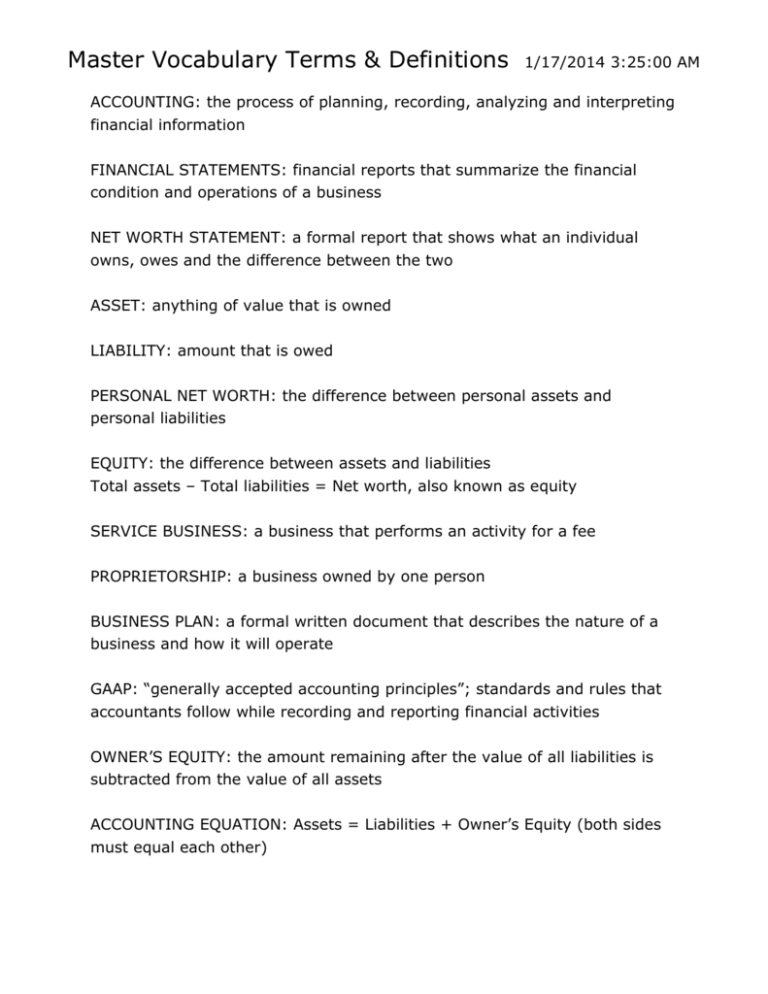
Master Vocabulary Terms & Definitions 1/17/2014 3:25:00 AM ACCOUNTING: the process of planning, recording, analyzing and interpreting financial information FINANCIAL STATEMENTS: financial reports that summarize the financial condition and operations of a business NET WORTH STATEMENT: a formal report that shows what an individual owns, owes and the difference between the two ASSET: anything of value that is owned LIABILITY: amount that is owed PERSONAL NET WORTH: the difference between personal assets and personal liabilities EQUITY: the difference between assets and liabilities Total assets – Total liabilities = Net worth, also known as equity SERVICE BUSINESS: a business that performs an activity for a fee PROPRIETORSHIP: a business owned by one person BUSINESS PLAN: a formal written document that describes the nature of a business and how it will operate GAAP: “generally accepted accounting principles”; standards and rules that accountants follow while recording and reporting financial activities OWNER’S EQUITY: the amount remaining after the value of all liabilities is subtracted from the value of all assets ACCOUNTING EQUATION: Assets = Liabilities + Owner’s Equity (both sides must equal each other) TRANSACTION: any business activity that changes assets, liabilities, or owner’s equity ACCOUNT: a record that summarizes all the transactions pertaining to a single item (Cash) ACCOUNT TITLE: the name given to an account ACCOUNT BALANCE: the difference between the increases and decreases in an account CAPITAL ACCOUNT: an account used to summarize the owner’s equity in a business CREDITOR: a person or business to whom a liability is owed REVENUE: an increase in equity resulting from the sale of goods or services EXPENSE: the cost of goods or services used to operate a business SALE ON ACCOUNT: a sale for which payment will be received at a later date WITHDRAWAL: assets taken from the business for the owner’s personal use T ACCOUNT: an accounting device used to analyze transactions DEBIT: an amount recorded on the left side of an account CREDIT: an amount recorded on the right side of an account NORMAL BALANCE: the side of an account that is increased CHART OF ACCOUNTS: a list of accounts used by a business ACCOUNTS PAYABLE: amounts to be paid in the future for goods or services already acquired ACCOUNTS RECEIVABLE: amounts to be received in the future due to the sale of goods or services JOURNAL: a form for recording transactions in chronological order JOURNALIZING: recording transactions in a journal SOURCE DOCUMENT: a business paper from which information is obtained for a journal entry SOURCE DOCUMENT ABBREVIATIONS: ENTRY: information for each transaction recorded in a journal DOUBLE ENTRY ACCOUNTING: the recording of debit and credit parts of a transaction CHECK: a business form ordering a bank to pay cash from a bank account SALES INVOICE: an invoice used as a source document for recording a sale on account RECEIPT: a business form giving written acknowledgement for cash received MEMORANDUM: a form on which a brief message is written to describe a transaction BALANCE-RULED ACCOUNT FORM: a form containing columns for the debit and credit balance LEDGER: a group of accounts GENERAL LEDGER: a ledger that contains all accounts needed to prepare financial statements ACCOUNT NUMBER: the number assigned to an account FILE MAINTENANCE: the procedure for arranging accounts in a general ledger, assigning account numbers, and keeping records current CHART OF ACCOUNTS: a list of account titles and numbers showing the location of each account in a ledger OPENING AN ACCOUNT (2 STEPS): (1) record the account title (2) record the account number POSTING: transferring information from a journal entry to a ledger account PROVING CASH: determining that the amount of cash agrees with the balance of the cash in the account records 1/17/2014 3:25:00 AM 1/17/2014 3:25:00 AM

